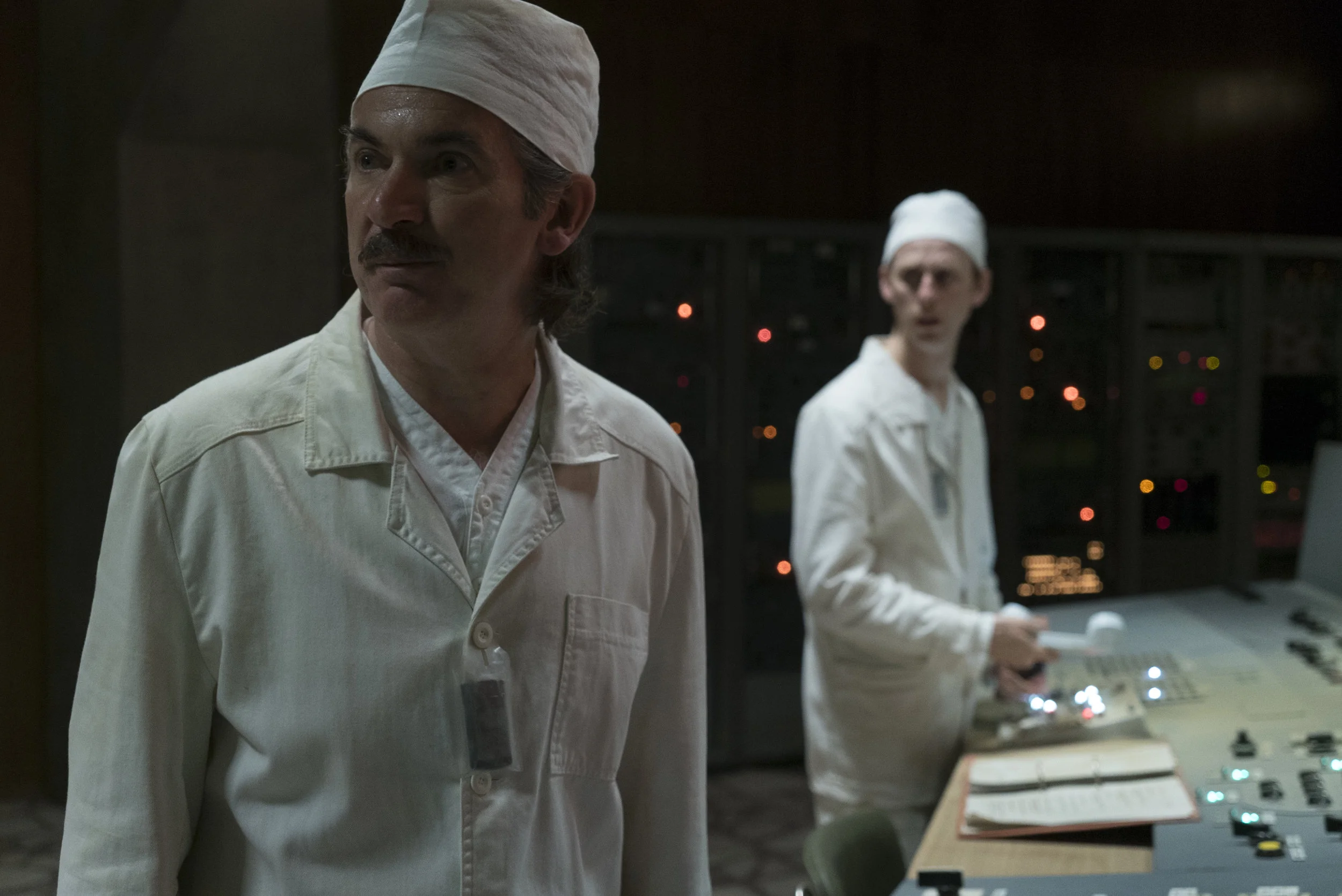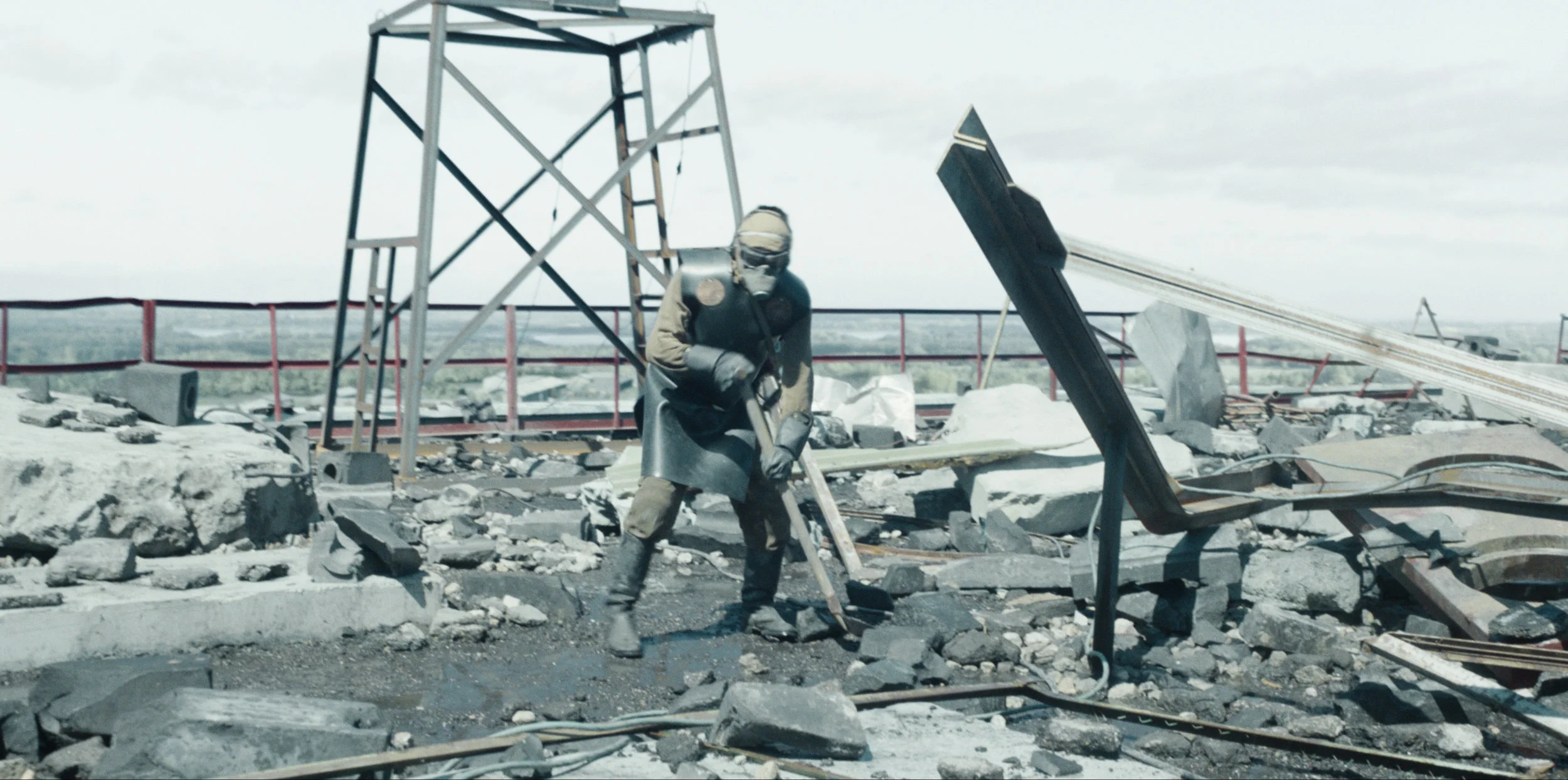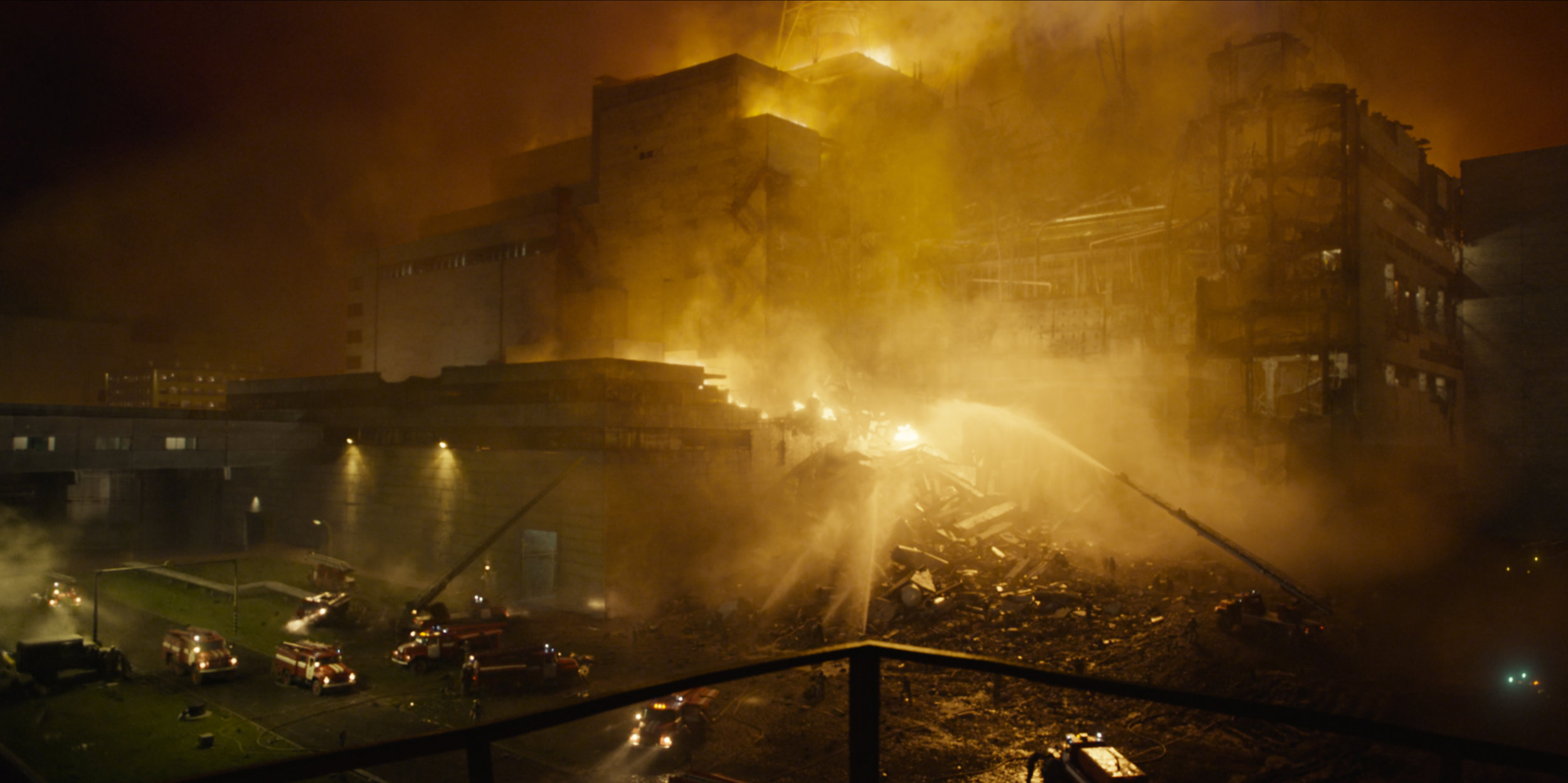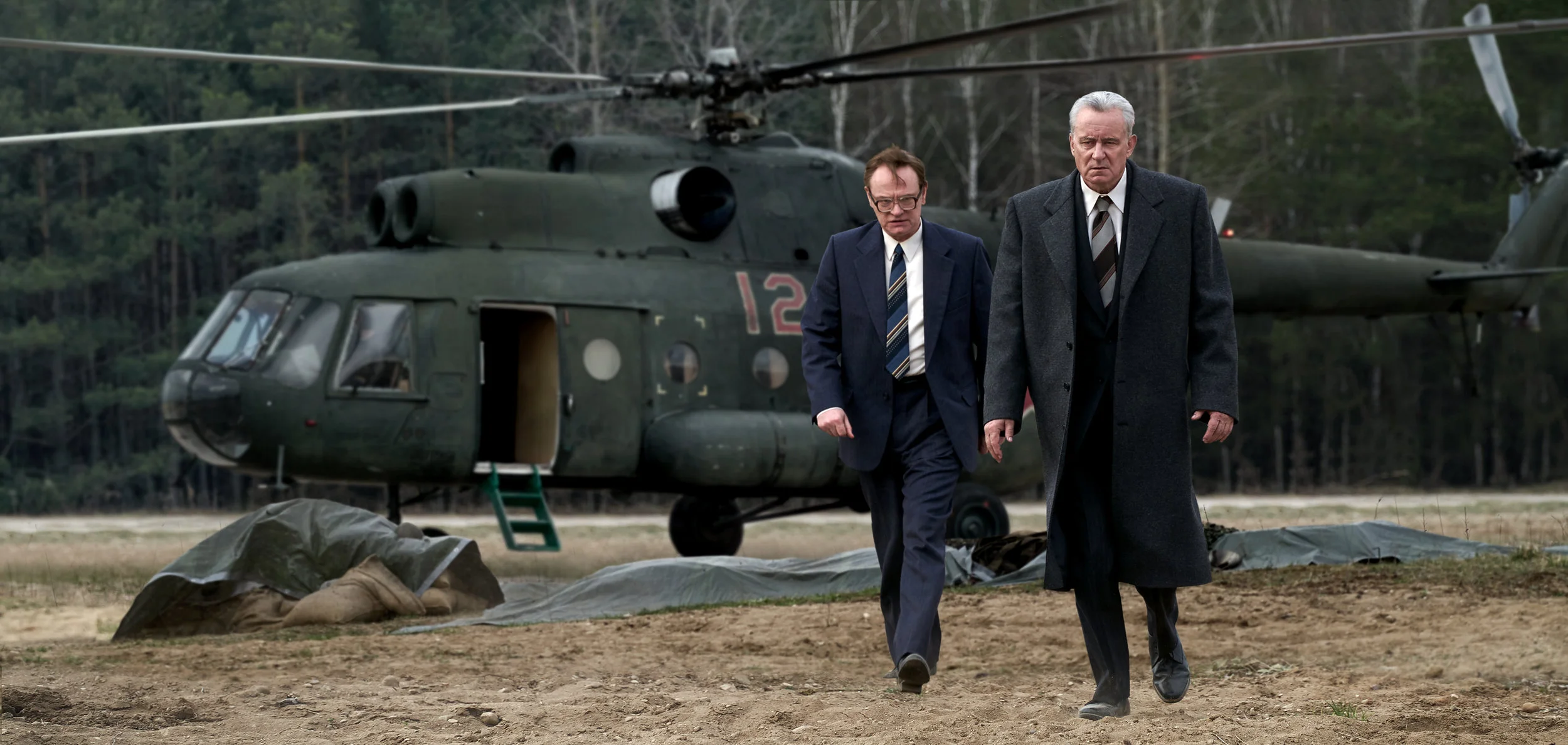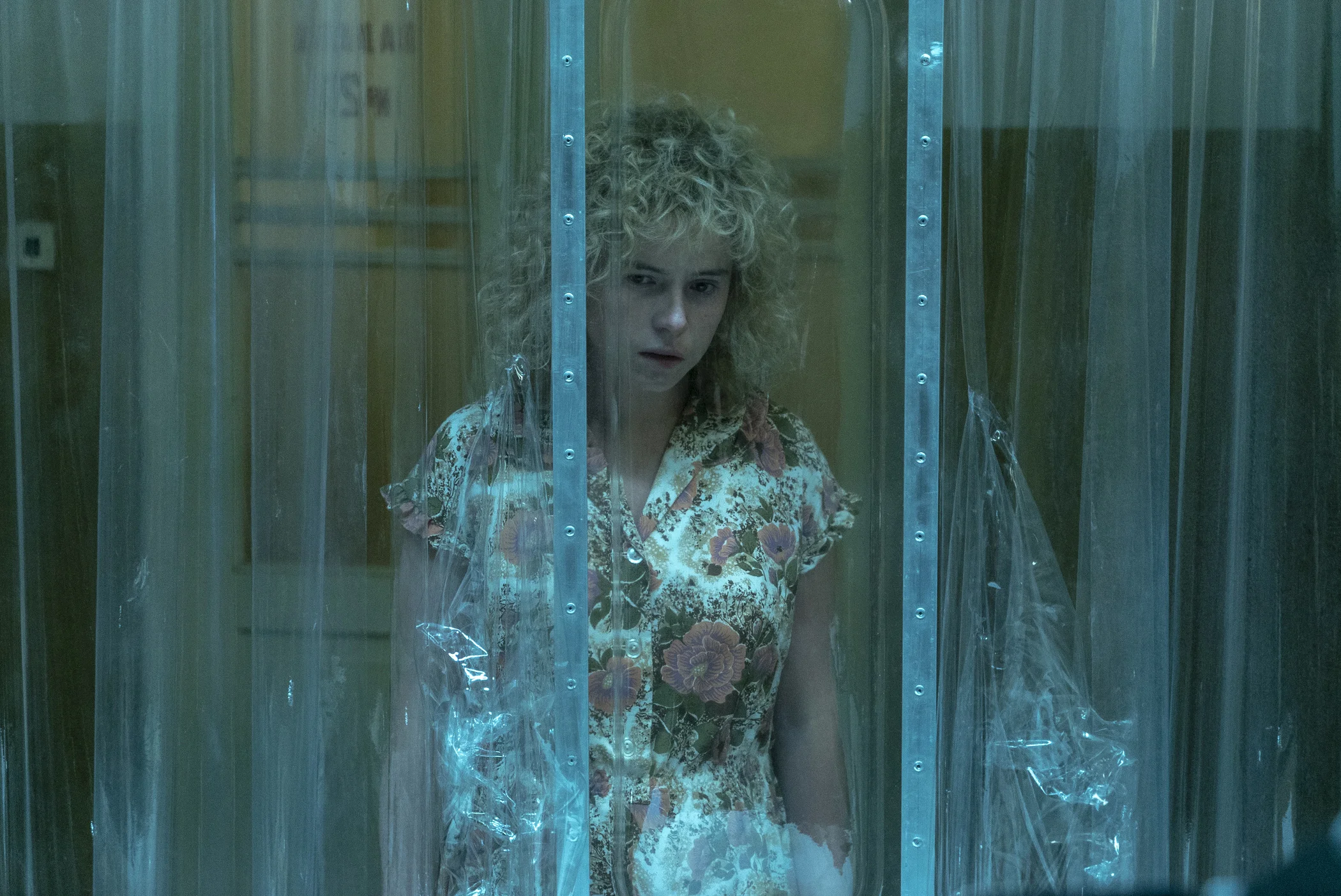Hildur Guðnadóttir
Hildur Guðnadóttir is the sensational Emmy winning Icelandic composer and recording artist whose creative output continually embraces bewitching fragility and menacing intensity. She is the musical illustrator behind resonant films and television serials including Chernobyl, Sicario: Day of the Soldado, Mary Magdalene, Trapped, and the keenly anticipated Joker. Possessing exceptionally vivid mastery of the cello and an empyrean singing voice, Hildur’s capacity for expression has enticed collaborations with Ryuichi Sakamoto, Hauschka, The Knife, Skúli Sverrisson, Fever Ray, David Sylvian, and the late, great Jóhann Jóhannsson. In her career as a solo artist, Hildur has released four critically acclaimed avant-garde albums through British imprint, Touch. In our illuminating discussion, Hildur shares about her labor-intensive compositional approach for Chernobyl, honoring the victims of this cataclysmic tragedy, and the significant artistic freedoms she enjoyed while working on Todd Phillips’ Joker, which debuts at this year’s La Biennale di Venezia.
Source: Antje Taiga Jandrig
Growing up in Reykjavík, Iceland, what led to your pursuit of classical cello training? How did you first envision a career in music, and which artists had an impact on you during your early life?
Well, pretty much everyone in my family is a musician, so it felt like the natural thing to do. I really just did what everyone else was doing. I never really made a conscious decision to become a musician; it’s just something that I always did, and never stopped doing. I haven't really felt the need to stop making music, so I'll just continue until I feel that need.
I think, in terms of the people that have influenced me, I’ve always been quite drawn to experimentation. I’ve always been drawn to people that are driven by curiosity, and have an open approach to music rather than a strict approach. I think that’s why I was a pretty bad classical musical student. I’ve always felt a bit disconnected from the feeling of there being any right and wrong in music.
Some people that have inspired me the most have been experimental like Laurie Anderson, Meredith Monk, and Pauline Oliveros. Incidentally, women, but it’s not because they’re women, it’s because I love their approach to music. They have very deep listening practices, but also very playful approaches. That’s always been what I’ve tried to follow in my practice as well — to have fun with it and never get stuck.
Pauline Oliveros! I believe she was one of the early experimentalists who used oscillators and tape. Is that right?
Exactly! She was a truly, truly remarkable musician and did groundbreaking work. She brought so much attention to the act of listening in playing music. I actually think the most important thing about making music is listening. I still find it so inspiring. That’s something I’ve also tried to follow in my film work — taking the approach of listening instead of coming in knowing what’s right. I like to listen to what the story needs in order to be told, and have as open ears as possible. No matter if it’s for film or other music, if I approach writing with open ears and an open mind instead of knowing exactly what I want to do, then I always have more fun. I try to keep my curiosity sparked.
After establishing yourself as a critically acclaimed solo artist and an in-demand session player/collaborator, what made you gravitate towards the medium of film composing?
Well, I’ve always loved storytelling, I’ve always loved reading stories, and I’ve always been really drawn to fiction. I worked a lot in theater before as well. Because I’m not really a “words” person, I find music is an easier form of expression and communication within storytelling for me. It’s a lot of fun to tell stories through music, so that was the main reason.
When I had my son, I had to stop touring as much, and incidentally got more and more film work. It was easier to work from home and have more flexibility, so I didn’t have to be on the road all the time. [Scoring] was also a practical decision, and I’ve really been enjoying it so far.
HBO’s Chernobyl is a dramatic rendering of the events surrounding the 1986 nuclear disaster in the Soviet Union. One of the most visceral miniseries ever produced, Chernobyl conjures, in haunting detail, a profoundly cataclysmic event solely attributed to human error. It also traces the fault lines between honesty and deceit within a fossilized bureaucratic structure. Against this backdrop, myriad harrowing tales of heroism, folly, sacrifice, and ruthless calculation unfold. What was the greatest responsibility of fashioning a score for this re-excavation of the enduring tragedy of Chernobyl?
It was a huge job to take on because it’s an event that’s affected so many people you know and don’t know. It’s such a significant event in our history. When I started working on Chernobyl, I didn’t fully realize how much it had impacted people very close to me. The engineer I was working with is from Italy, and he had all of these physical issues he had to deal with, which were a direct consequence of exposure to the radiation. It spread so silently, but so massively in so many directions. It changed the reality of so many people. I felt that it was a big task to tell a story like this because it was not fiction — it was real. There’s also a whole generation of people that maybe had no idea it occurred, and people who weren’t born when this happened who are now adults, who are just getting to know the facts of what happened. I think it’s really important that this story is retold and never forgotten, so we keep learning from the mistakes that happened there.
It was really important to me to be as respectful as possible to the people that both passed away and the people that are still alive who lived through these events. I wanted to try to imagine what the fear of radiation and fear of the space you’re in could possibly feel like. I thought a lot about being afraid for your life. To me, that somehow didn’t feel like action drums, for example. It was important to be as honest as possible, and try to capture what it must have felt like in reality. That’s really how I first went about approaching the music — from the spatial side, from the nuclear side, and from the catastrophic side of what happened. I felt like going a bit more heavy and oppressive was the right approach, rather than thumping, which would have been more like the sound of a thriller. What happened in Chernobyl was such a dramatic event in itself. It was so remarkable and so scary that I felt like it didn’t need any extra dramatization from the music. It didn’t require any enhancement of these feelings.
Before production, you had the opportunity to visit the decommissioned power plant in Lithuania where the series was filmed and create field recordings. What specific found sounds became essential and integral to the musical identity of Chernobyl?
I recorded hours and hours of material at the power plant in Lithuania, and then worked with those recordings for quite a few months to create sounds — to portray fear in the space, the oppression of the radiation and the plant itself. Everything you hear is drawn from the actual nuclear power plant.
There are a lot of ways to work with space. I didn’t want to go in there and activate the space myself. I wanted to go in there and listen to what was already there — the sounds that the space wanted to make naturally. Instead of going inside and slamming doors and banging on things, I found it much more interesting to just open my ears. It was almost like being on a nuclear treasure hunt. I just opened up all of my senses and just searched. It was a really, really incredible process of recording, and then going through those recordings. I found these tiny sounds that were in almost inaudible registers and then brought them down to audible registers to be able to work with them. It felt like the most respectful way of working with the space. I just listened to what it had to say first and then started interpreting it from there.
From a technical standpoint, are you referring to IRF?
Yeah, yeah. For example, I created impulse responses for all the spaces — the reactor hall, the turbine hall, and the pump room. Going there myself was so impactful because the size of the plant — you can’t really describe it. I think for an event like this, the space is so important to the story being told. The power plant itself is such a big character — these long corridors, and enormous, enormous rooms.
And then, all my vocals [in the score], which are the human element — they were all sent through these impulse responses. Even though I’m singing, it goes through those spaces.
I’m not sure how many of our readers know about impulse responses, but it must have been amazing to be able to bring those atmospheres back to your studio.
They’re so much fun, and it’s such a fantastic way to re-enter a space without being there.
Can you tell us about your experience of recording at the nuclear power plant alongside consummate specialist, Chris Watson?
I’ve known Chris for a really long time because we’ve been on the same label, Touch, for nearly a decade now. We’ve worked together a whole bunch before, and even did some concerts together. He’s just the most inspiring person to work with because he’s the master of field recordings. He records everything for David Attenborough. If you need to record things like ants and glaciers, he’s the person who knows what to do. He’s unbelievably inspiring in the way that he approaches recordings and listening. He’s an absolute genius, so it was wonderful working with him.
Your mosaic-like score is an ominous unifying force, mirroring the gathering dread of horrific events taking place on the ground, and the global implications of this catastrophe as they come into focus. How did your own emotional response factor into your compositional approach? Which storylines haunted you the most?
Well, I approached it in two ways. I think the biggest things the music had to communicate were the nuclear, spatial side, which represented the fear and radiation aspects, and then the human element — the sorrow and grief, the tragedy of a human error with consequences, and the politics of how it was dealt with. Those were the parts of the story I could relate to better. Being a mother, I know how it feels to be afraid for the safety of my child, and I know how it feels to carry a loved one to his grave. Those were the feelings I could definitely understand. Those elements came more naturally to me and helped me turn those feelings into music.
It’s just such a tragedy. It absolutely had an emotional effect on me while I was working on telling this story because it was just so heartbreaking. Again, I’ve really experienced the rawness of loss, so I felt the most honest way for me to connect to that was through my own voice. I felt that singing was the way to express my feelings about it, so that was the approach I took.
One of the most heartbreaking and disturbing moments of Chernobyl is the burial scene in which the deceased firefighters exposed to acute radiation syndrome are enclosed in lead caskets and laid to rest as their loved ones look on. As concrete pours over their communal grave, your musical accompaniment evokes empathy and bewilderment. Can you explain the aesthetic choices you made to support this sequence?
I think that’s a really great example of the utter heartbreak that occurred. You witness so many difficult scenarios, but that’s one of the most painful moments. Not only do you have to bury your loved ones, but they also pour cement on them. It’s really the rawest form of heartbreak. I scored to that scene and basically watched it again, and again, and again. I just tried to evoke that emotion in me, which was very easy to do because it’s such a hard scene to watch.
I also think there’s a pretty big difference when you’re scoring something you know is real. When it’s just a fictional character, you can be more adventurous and make up stories yourself. For this project, it was a very unique feeling to score something so devastating that really happened.
I felt a deep sense of commitment to telling this story right. I think it came out so wonderfully because everyone involved poured so much heart into it. Every single person did an amazing, truly phenomenal job. When you’re working on projects, it’s difficult to know which ones will reach an audience and if that audience will listen to what you’re trying to say. Sometimes, you pour your heart into something, and it just goes with the wind, so it’s been really great to feel how much of an impact our work has had on people.
Based on the DC Comics character of the same name, Todd Phillips’ Joker is a dark character study of a disgraced and deranged stand-up comedian turned villain. The film is slated to debut at the Venice Film Festival this month, placing it in contention for the coveted Golden Lion prize. It will subsequently be released nationally on October 4th. Without revealing too much, can you give any sense of the musical treatment you have crafted for this psychological thriller?
Well, I definitely shouldn’t reveal too much quite yet, but The Joker is a larger than life character, so it was definitely magnificent to work within his story. His character has been with people for so long, and they are so connected to him that he’s almost become real to them. This was a more traditional film score project, where you’re telling a fictional story, and creating a world for it. It was so fantastic to be a part of the film.
I also came into the project very early on, so I started creating the music just after reading the script. The music was quite a big part of the process of how the film grew because it was played both on set and for Joaquin [Phoenix] to listen to in-ear. The music seemed to affect his movements and his acting, as well as the pacing. This was a very inspiring and fun approach to take because then you get to work together, creating the musical world of the film in tandem. We really took the time to mix all of the elements together from the get-go.
Would you say most of the music was composed by picturing the sequences in your mind, or was a lot of it scored to picture after filming?
There was absolutely a lot of composing to picture afterward, but starting early was an effective way of setting the tone before shooting. Of course, the cuts change all the time, so you have to re-edit, re-do, and re-compose for whole new scenes. In the end, working like this takes a lot longer than if you just come in for the final cut, but for me, it was a much more creatively satisfying way to work. It feels like you are creating a much more cohesive piece of art when all the elements grow alongside each other.
What did you appreciate most about Todd Phillips’ approach to filmmaking?
I had a great working relationship with Todd. I think what I appreciated most was the level of trust he showed me. He had an openness that told me he was unafraid of being very bold on his film. The experimental side of me is always trying to push in directions that are not exactly middle of the road paths, and he was very open-minded to what I wanted to do throughout the whole process.
And you also had an amazing actor to support musically! Joaquin Phoenix has such incredible range to literally go from Jesus to Joker.
Yes, and I also scored Mary Magdalene. I’ve probably spent more time with Joaquin in front of me than any other person aside from my son. It’s a total coincidence too. There are always these threads! Mary Magdalene was the last movie I scored, and then I was offered the opportunity to do Joker. From very early on, I knew he was cast as the lead, and I was like, “Wow, okay!”. Then I found out that Craig Mazin, the creator of Chernobyl, also wrote The Hangover with Todd [Phillips]. It turned out to be this strange cobweb of coincidences, but it also felt like a very natural progression of things.
We understand that you’ve spent more than a decade living in Berlin. Can you tell us about the community of artists you surround yourself with and the distinct benefits of working outside of Hollywood?
I’m actually not a huge people person. I mean, I love people, but I need a lot of privacy and space for myself. It’s very important to me to work with people that I know extremely well, so I mostly try to surround myself with my family. The score producer of both Chernobyl and Joker [Sam Slater] is my partner in life and in work. The other person who works with me on the productions is someone I’ve been playing music with since I was about fourteen, so we’re practically family. Then I also fly my little brother over to work on stuff, and my dad actually plays clarinet on many of the projects. It’s very much a family affair.
I think, for me, music is such a personal way of communicating, and you’re in a very fragile state when you’re composing. I’m not the kind of person who has a super easy time expressing myself through words. I find it simpler to express myself with people that really understand what I mean without having to explain too much. It’s a huge luxury to be in the position to basically only work with my own family.
In Berlin, we have a studio. It’s a whole floor in an old industrial building, so there are actually seven individual studios. The people I work with all have their own studios here, and then there’s a group of other people, some Icelandic friends that have their own space, and just some other friends I met in Berlin work here as well. We have a small community of around ten people on the same floor. Those are basically the only people I meet, and it’s all the socializing I do. Now we have our dogs here, and people bring their kids in. It’s really lovely.
I just don’t think that being in Hollywood would work for me. The climate is also a big part of that. Coming from Iceland, I’m used to extreme weather like rain and cold, and then it’s always snowing, and then it gets hot. I think I’d miss the seasons too much if I lived there. I’m also not good at the whole meet and greet aspect of the industry, so it’s better for me to hide out and never meet anyone. [laughs]
What about the premieres of the films you work on? Will you be there for the debut of Joker?
I actually rarely go, but I’m definitely going to that. It’s too close to my heart not to attend. It’ll be really, really fun. We had such a great time during production as well. I got really close to Jason [Ruder], the music editor, Todd [Phillips], and all the other people working on the film. It was such a wonderful production, so it would be horrible not to go and give them a high five.
Interviewer | Paul Goldowitz
Research, Copy, Editing, Layout | Ruby Gartenberg
Extending gratitude to Hildur Guðnadóttir and White Bear PR.








